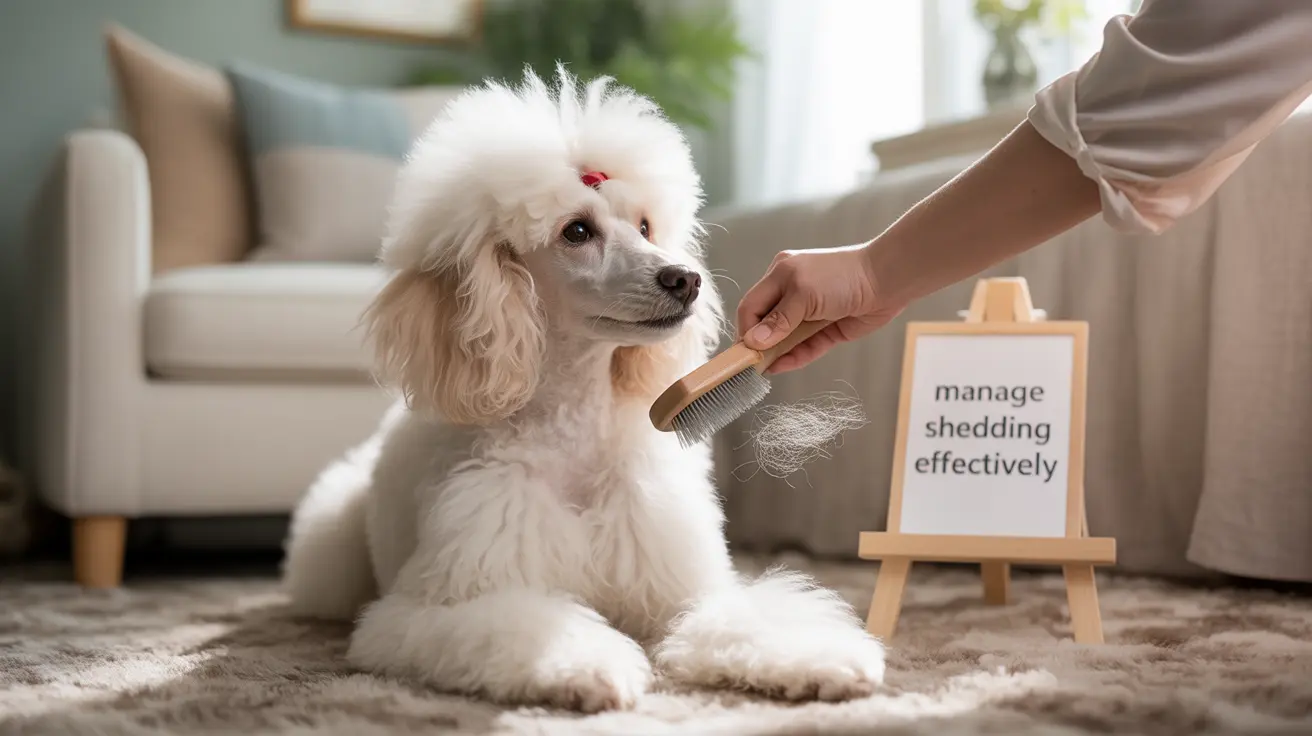If you're considering adding a Labradoodle to your family, you're likely wondering about their shedding habits. While these popular designer dogs are often marketed as non-shedding breeds, the reality is more nuanced. Let's explore everything you need to know about Labradoodle shedding, including what to expect and how to manage it effectively.
Understanding Labradoodle shedding patterns requires knowledge of their diverse coat types and genetic makeup. As a crossbreed between Labrador Retrievers and Poodles, their shedding characteristics can vary significantly depending on which parent breed they take after more strongly.
Understanding Labradoodle Coat Types
Labradoodles typically come with three distinct coat varieties, each with different shedding tendencies:
Wool Coat (Curly)
This Poodle-like coat is typically the most allergy-friendly and sheds the least. The tight curls trap loose hair within the coat, requiring daily brushing to prevent matting but resulting in minimal visible shedding around your home.
Fleece Coat (Wavy)
The wavy coat represents a middle ground between both parent breeds. These coats typically shed moderately and require brushing every few days to manage loose hair and prevent tangling.
Hair Coat (Straight)
More similar to the Labrador parent, straight-coated Labradoodles tend to shed the most of all three types. Regular brushing is essential to manage loose hair and maintain coat health.
Factors Affecting Labradoodle Shedding
Genetics and Generation
First-generation (F1) Labradoodles often have more unpredictable shedding patterns. Later generations, especially those bred back to Poodles (F1B), typically shed less due to stronger Poodle genetics.
Seasonal Changes
Like most dogs, Labradoodles may experience increased shedding during seasonal transitions, particularly in spring and fall. However, this seasonal shedding is usually less pronounced than in pure Labradors.
Managing Labradoodle Shedding
Regular Grooming
Proper grooming is crucial for managing Labradoodle shedding. Establish a consistent routine that includes:
- Daily brushing for curly coats
- 2-3 times weekly brushing for wavy coats
- Weekly brushing for straight coats
- Professional grooming every 6-8 weeks
Health and Nutrition
A healthy diet rich in essential fatty acids can help maintain coat health and minimize excessive shedding. Regular veterinary check-ups ensure any health-related shedding issues are caught early.
Frequently Asked Questions
Do Labradoodles shed, and how much shedding should I expect from them?
Labradoodles do shed, but the amount varies greatly depending on their coat type. Curly-coated Labradoodles typically shed very little, while straight-coated ones may shed moderately. No Labradoodle is completely non-shedding.
How does a Labradoodle's coat type affect their shedding levels?
Curly (wool) coats shed the least but require the most maintenance. Wavy (fleece) coats have moderate shedding, while straight (hair) coats tend to shed the most similarly to Labradors.
What grooming routines help manage shedding in Labradoodles with different coat types?
Regular brushing is essential for all coat types, with curly coats needing daily attention, wavy coats requiring brushing every 2-3 days, and straight coats needing weekly brushing. Professional grooming every 6-8 weeks helps maintain coat health.
Are Labradoodles a good choice for people with allergies due to their shedding?
While no dog is completely hypoallergenic, curly-coated Labradoodles can be a good choice for allergy sufferers due to their minimal shedding. However, potential owners should spend time with the specific coat type before committing.
How do genetics and Labradoodle generations influence the amount they shed?
Later generation Labradoodles (F1B and beyond) typically shed less than first-generation (F1) dogs due to increased Poodle genetics. The closer the dog is genetically to a Poodle, the less likely it is to shed significantly.
Conclusion
While Labradoodles can make excellent, relatively low-shedding pets, it's important to understand that their shedding levels vary based on coat type, genetics, and generation. With proper grooming and care, most Labradoodle shedding can be effectively managed, making them wonderful companions for families willing to commit to their maintenance needs.






